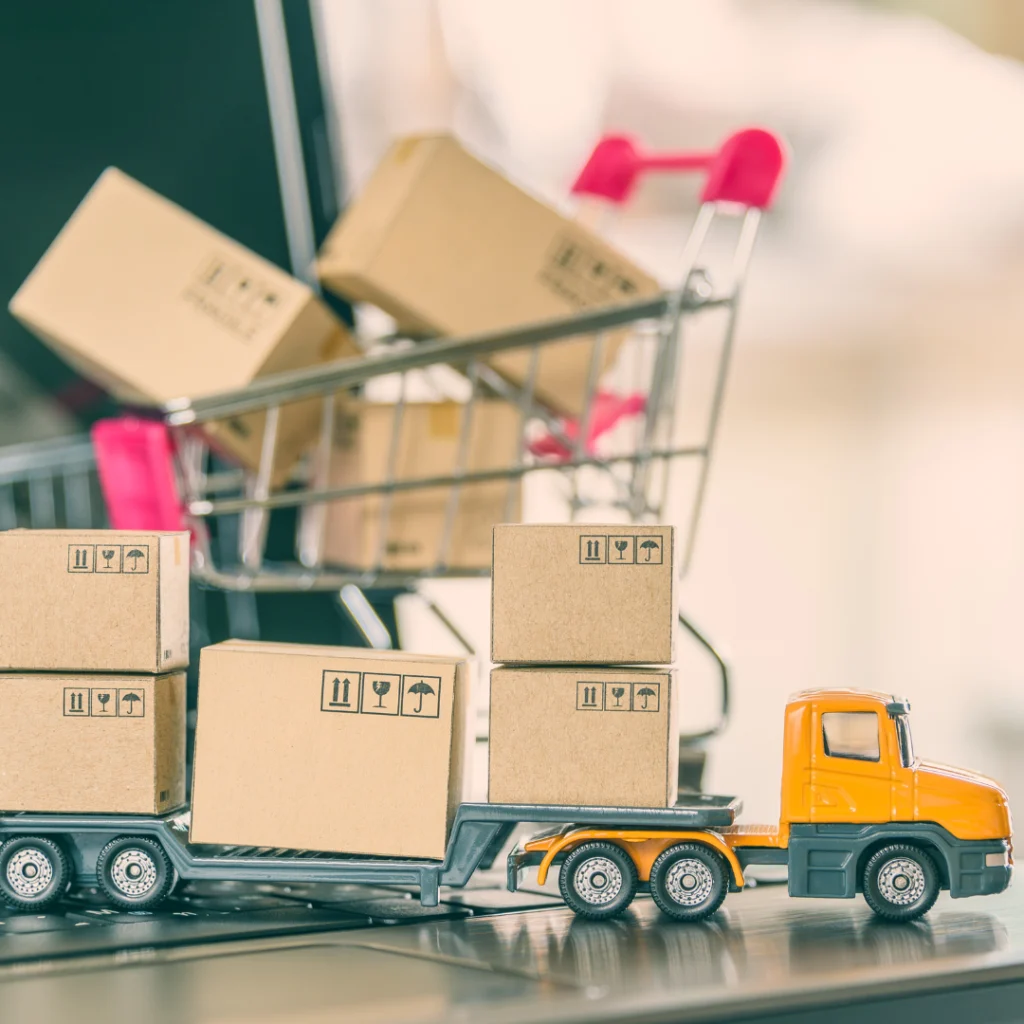The RMA Process: How it Works with Real-Life Examples

In the last 5 years alone, ecommerce sales have more than doubled. Although the pandemic had a lot to do with this spike in online shopping, we continue to see the ecommerce industry grow in our post-pandemic world. In fact, there have been 2.5 million new Shopify stores opened in the last 2 years alone.
While that’s all great for business, it also means that competition is steep. Gaining customer loyalty and keeping a competitive edge is essential for survival. The first thing that’s overlooked by ecommerce merchants when it comes to strengthening their business lies in their returns management strategy.
Many ecommerce merchants assume that they could get by manually processing their returns. However, this timely and very frustrating process keeps returns high, hurts customer retention, and prevents merchants from utilizing their returns data to grow their business.
As online purchases increase, so does the need for an effective returns management process. In 2023, there’s no way that could be done manually. Instead, leading ecommerce merchants are choosing Return Merchandise Authorizations (RMAs).
In this article, we will explore the importance of the RMA process and provide insights into best practices for RMA management. Additionally, we’ll delve into the features and benefits of RMA software solutions that can simplify and streamline the entire return process. We even include real-life examples of ecommerce merchants and how RMA automation helped them grow their businesses.
Read through until the end to learn how the RMA process could help you gain a competitive edge in the ecommerce industry. Don’t forget to follow us on social media to learn more about ecommerce returns management.
It’s clear that the RMA process is superior to manually tracking and managing online returns. However, in order to get the most benefit out of RMA automation, there are a few best practices that ecommerce merchants should consider.
Simplify the RMA Process to Start a Return
The first step towards a successful returns experience is simplifying the return initiation process. If a customer can’t figure out how to even initiate a return, their experience is negative from the get-go. This frustration will carry out throughout the entire return process.
It’s important to provide clear instructions and a user-friendly interface to make it easy for shoppers to initiate a request when they want to return a product. Additionally, it should also be clear to the customer which products are eligible for a return.
Communicate Return Policies & Procedures Effectively
Your returns policies should have clear instructions and guidelines that make it easy for customers to understand if their purchase is eligible for a return. This page should also clearly state any shipping or repackaging costs, delivery instructions, and what to expect from the returns process.
Providing clear instructions helps customers return a product without frustration. Without it, customers can feel lost on how to return a product and feel like they wasted their money. This discourages them from shopping with your ecommerce store again, which hurts your customer lifetime value.
Provide Accurate & Prompt Authorization Decisions
It can be frustrating for customers when they don’t know what’s happening with their return. With an RMA process, customers get real-time updates on their return status. They’ll get a notification when the customer service team approves the request when the product arrives back at the warehouse, and when the return is complete.
Customers appreciate timely responses to their return requests. It creates a positive returns experience, which helps to deepen their loyalty toward your brand. However, although the RMA process automates these updates for you, it’s essential to review return requests promptly and communicate authorization decisions to customers in a timely manner.
Give Proper Packaging & Labeling Instructions

One of the common challenges in returns is the risk of damage during transit. This can be problematic when a returned product is disqualified for being damaged when it wasn’t done by the customer. Shoppers who find themselves in this situation will not only be frustrated but feel accused of something they didn’t do.
This will affect your relationship with that customer and affect brand perception as they tell close family and friends the story about their negative returns experience. To mitigate this risk, ecommerce merchants should provide customers with detailed instructions on how to properly package and label the returned item.
Offer Convenient Return Shipping Options
Using RMA software that provides a prepaid shipping label when a return is initiated will make it even easier for customers. Customers like convenience and options. So, offering both for return shipping is crucial for customer satisfaction.
Prepaid labels not only save customers time and effort but also reduce the friction associated with arranging and paying for return shipping. By offering convenient return shipping options, ecommerce merchants demonstrate their commitment to customer convenience and build trust and loyalty.
Conduct Thorough Instructions & Timely Processing
Once the returned item reaches the warehouse, it’s vital to conduct thorough inspections to qualify products for restocking or disposal. Promptly inspecting returned items helps prevent fraud and ensures that customers receive timely resolutions.
However, it’s important to process returns or exchanges within a reasonable timeframe. Online shoppers value efficiency. So, returns should be processed as quickly as possible in order to maintain a positive return experience. This is done easier after establishing clear processes for evaluating the condition of returned items and verifying their eligibility.
What Does RMA Software Look Like?
It’s easy to understand how the RMA process works in theory, but what exactly does RMA software look like? Well, a lot of it depends on the software you choose, so we could only speak for ourselves here, really.
At ReturnLogic, we pride ourselves on building RMA software that simplifies returns for everyone involved. As such, we’ve built a returns management program that is customizable to fit each ecommerce merchant’s needs.
Here’s How:
Empower Shoppers with Convenience
Shoppers crave convenience and autonomy in their returns journey. RMA software, such as ours at ReturnLogic, offers a Self-Service RMA center that allows shoppers to navigate the return process easily, without having to talk to anyone on the customer service team.
Whether it’s a return for warranty claims, store credit, refunds, or exchanges, the Self-Service RMA center provides a user-friendly interface for shoppers to initiate and track their returns independently. By placing control in the hands of the shoppers, businesses can enhance the overall returns experience and increase customer satisfaction.
Tailor the RMA Center to Your Brand
Maintaining brand consistency is crucial in every aspect of your ecommerce operations, including returns. Our RMA software at ReturnLogic offers the flexibility to customize the RMA Center to align with your brand identity. By incorporating your brand colors, logos, and visual elements, you can ensure a seamless and cohesive experience for your customers. This customization reinforces your brand image and strengthens customer trust during the returns process.
Collect Valuable Insights to Improve Operations
Our RMA software at ReturnLogic serves as a powerful data collection tool that can help extract insights from returns data to improve your business. When shoppers initiate a return through the self-service RMA center, they are prompted to provide information about why the product is being returned.
This data serves as valuable feedback that could shed light on product issues, customer preferences, and areas for improvement. The collected information is displayed on a dashboard that makes it easy to identify patterns and trends to make data-driven decisions and enhance operational efficiency.
Real-Life Examples of the RMA Process
Now that you have a better understanding of what the RMA process looks like, let’s look at some examples of real ecommerce merchants who used ReturnLogic to streamline their returns management.
EXAMPLE 1: Charix Shoes Streamlines Returns for Improved Customer Satisfaction

Known for its universally chic footwear, Charix gained its success as an ecommerce brand by popularizing a shoe made by skilled Turkish craftsmen for centuries. Prior to adopting an RMA process, the brand faced the daunting task of managing returns manually.
This process consumed a staggering 80 hours per week of their employees’ time. However, by integrating ReturnLogic’s software, the brand experienced a remarkable turnaround. The RMA automation provided by ReturnLogic empowered the shoe brand to streamline various aspects of its returns journey.
Charix originally invested in ReturnLogic to streamline the inspection and processing phase. However, after implementing the RMA solution, the ecommerce business made enhancements in numerous areas of their business.
One of those enhancements came from becoming empowered with the ability to automatically generate return labels. In the past, this task required significant manual effort. But, by implementing ReturnLogic’s software, the company was able to save time and minimize errors.
They were also able to automate the refund process, ensuring promptness and an enhanced customer experience. Eliminating human intervention created an efficient and seamless experience for customers and kept human errors from prolonging the process.
Additionally, the automation software facilitated efficient tracking of shipments, enabling the brand to monitor the status of returns in real time. This enhanced visibility helped the brand to proactively address any issues that may arise during the process.
Ultimately, the implementation of ReturnLogic’s RMA process proved to be a game-changer for the artisan shoe brand. The time savings of 80 hours per week translated into increased operational efficiency and cost savings.
Moreover, the improved customer experience contributed to higher satisfaction levels and increased customer loyalty. The success of this case study highlights the significant impact that RMA automation can have on businesses, enabling them to optimize their returns processes and focus on delivering exceptional customer service.
EXAMPLE 2: C-IN2 Prevents Fraudulent Returns with a Robust RMA Process

C-IN2 are ecommerce fashion merchants who faced challenges with fraudulent returns that were impacting their bottom line. They turned to ReturnLogic in the hopes that a robust RMA system would combat the issue of returns fraud and ensure a fair and secure return process.
Before implementing RMA automation, C-IN2 faced several challenges in managing their returns. The manual process resulted in inefficiencies, limited visibility, and a lack of control. All of these challenges were leading to their high rate of return fraud.
ReturnLogic’s software allowed C-IN2 to collect and analyze detailed information about their returns, including reasons for returns, product conditions, and customer feedback. These insights enabled the brand to identify patterns and trends and make data-driven decisions.
This data-driven approach not only improved internal processes but also helped C-IN2 identify opportunities to increase profits, such as identifying the need for product improvements or identifying high-demand items for restocking.
Additionally, the software provided C-IN2 with customizable rules and automation options. This allowed them to set specific return policies, automate return labels, and efficiently process refunds or exchanges.
Gaining control over the returns process helped the company prevent fraudulent returns before they happen. By using ReturnLogic to streamline their returns management, C-IN2 ultimately reduced manual errors, improved efficiency, and enhanced the overall customer experience.
EXAMPLE 3: Ecru Leverages Data for Product Improvement

Ecru is a home goods ecommerce merchant who recognized the value of RMA data for identifying product quality issues and driving improvements. They turned to ReturnLogic to implement a robust RMA process that provides a feedback mechanism for their product development team.
Ecru faced the challenge of high return rates. With this came the high costs incurred by ecommerce businesses when a return occurs. This includes transportation fees, restocking or disposal costs, and the cost of the lost sale.
In order to mitigate this, Ecru adopted ReturnLogic’s RMA software to tackle these issues and achieve significant improvements in its returns management. With ReturnLogic, Ecru was able to ask customers for detailed feedback whenever they initiated a return.
The company categorized this feedback and analyzed it regularly to identify recurring issues, design flaws, or customer problems and trends. They used this valuable information to refine their product designs, enhance quality control measures, and identify areas for improvement.
The implementation of ReturnLogic’s RMA software also allowed Ecru to streamline its returns process. The self-service RMA center provided a user-friendly interface for customers to initiate and track their returns independently. This convenience and autonomy for shoppers resulted in improved customer satisfaction and a smoother returns experience.
As a result of these efforts, Ecru was able to achieve impressive outcomes. The brand successfully reduced its return rate by 9%, indicating a notable improvement in product quality, customer expectations, and overall satisfaction.
Additionally, they were able to decrease multi-size purchases by 15%, which further demonstrated the effectiveness of the RMA process in addressing fit-related issues and reducing the need for customers to order multiple sizes.
Overall, Ecru’s implementation of ReturnLogic’s RMA software proved to be a game-changer for their returns management. By leveraging the software’s analytics capabilities and providing a user-friendly returns interface, the brand was able to reduce return rates and multi-size purchases significantly.
Implement a Robust RMA Process with ReturnLogic
In an industry as saturated as ecommerce retail, efficiency, and accurate data tracking become essential for survival. A manual returns management process simply cannot keep up with the demand of a growing ecommerce business.
By implementing a robust RMA process, ecommerce merchants can streamline their returns management. Doing so gives them access to valuable returns data. This data could be analyzed for patterns and trends that help merchants better understand customer returns behavior, product performance, and user experience.
Armed with this knowledge, ecommerce merchants are empowered to make data-driven decisions that help them grow their business and provide an exceptional customer experience. To gain a competitive edge with a robust RMA process, book a demo with ReturnLogic today!
Ready to simplify your returns management?
Schedule a free ecommerce returns audit today!






